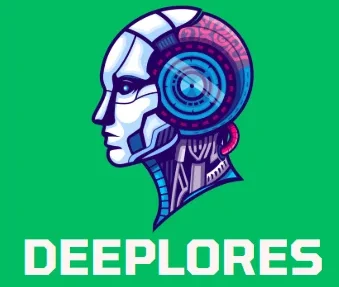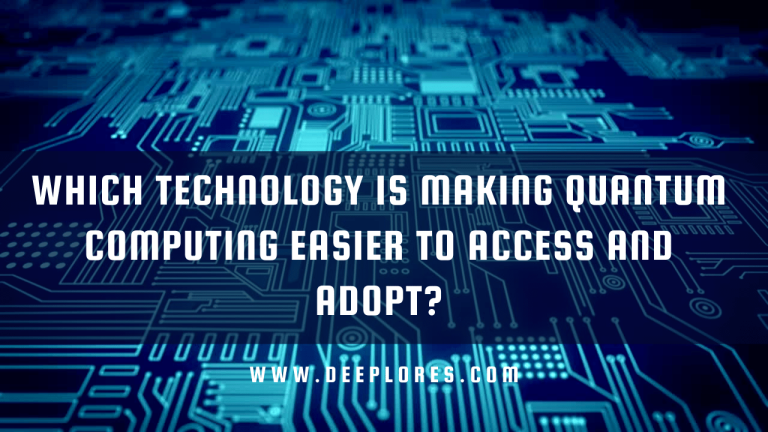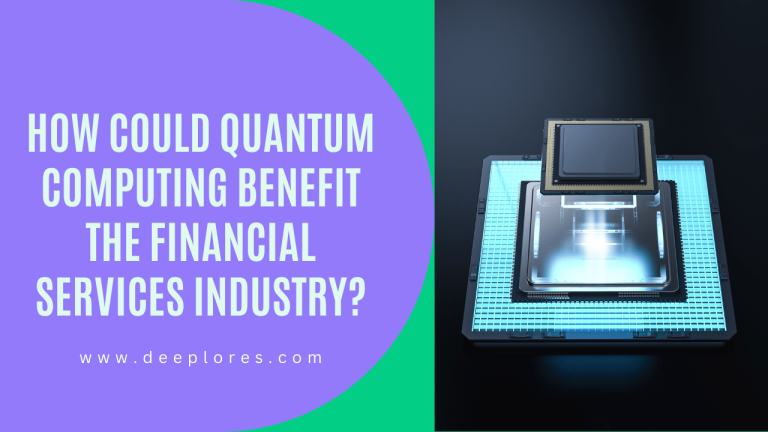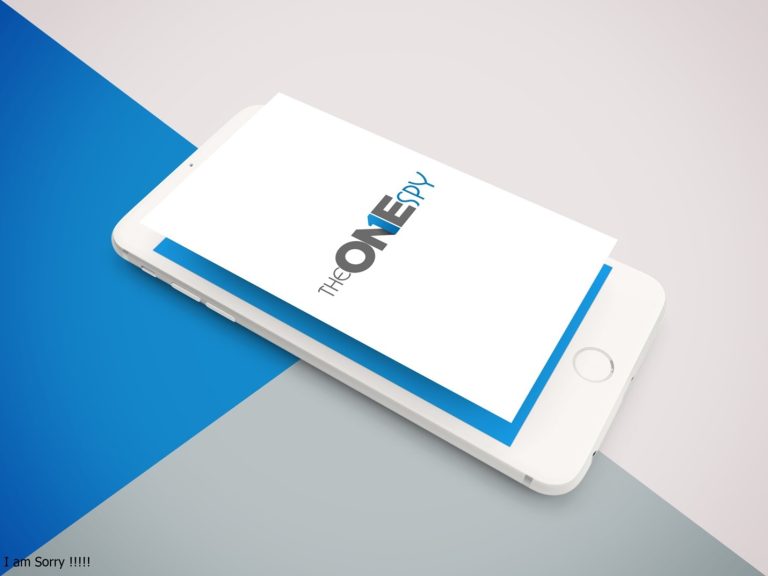What Describes the Relationship Between Edge Computing and Cloud Computing?
In today’s interconnected world, where data is generated at an unprecedented rate, businesses and organizations are seeking innovative solutions to process, analyze, and derive insights from this vast amount of information. Two transformative technologies, edge computing and cloud computing, have emerged as key players in this data-driven era. While edge computing brings computing power closer to the source of data generation, cloud computing provides scalable and flexible resources for processing and storing that data. Understanding the relationship between these two paradigms is essential for maximizing their potential and driving digital transformation. Let’s discuss about “What Describes the Relationship Between Edge Computing and Cloud Computing?” in detail in the coming paragraphs.
The Synergy of Edge Computing and Cloud Computing
Edge computing and cloud computing, although distinct, are complementary technologies that work together to create a powerful ecosystem. Edge computing involves performing data processing, analytics, and computation at or near the edge of the network, closer to where the data is generated. This enables real-time decision-making, reduced latency, and bandwidth optimization. On the other hand, cloud computing leverages remote servers to store, process, and manage data, offering virtually limitless computing power, storage, and scalability.

By integrating edge computing with cloud computing, organizations can harness the strengths of both approaches. Edge devices can perform initial data filtering and preprocessing, reducing the amount of data that needs to be transmitted to the cloud. This alleviates network congestion and minimizes latency, ensuring rapid response times for critical applications. The cloud, with its vast computational resources and storage capacity, can handle intensive data processing, complex analytics, and long-term storage.
Advantages of Combining Edge Computing and Cloud Computing
The convergence of edge computing and cloud computing offers several compelling advantages:
- Improved Performance: By processing data at the edge, closer to the data source, organizations can achieve real-time insights and faster response times. Latency-sensitive applications, such as autonomous vehicles or industrial automation, benefit from reduced round-trip times to the cloud, enabling faster decision-making and enhanced user experiences.
- Scalability: Cloud computing provides unparalleled scalability, allowing organizations to effortlessly scale their computing resources based on demand. When edge devices experience spikes in data generation, the cloud can seamlessly accommodate the increased load, ensuring uninterrupted operations.
- Enhanced Security: Edge computing minimizes data exposure by processing sensitive information locally before transmitting it to the cloud. This approach reduces the risk of data breaches and ensures compliance with data privacy regulations. Additionally, by distributing computing tasks across edge devices, the impact of a single device being compromised is limited.
- Cost Efficiency: Edge computing optimizes network bandwidth and reduces the amount of data transmitted to the cloud, resulting in lower data transfer costs. Furthermore, by offloading data processing to edge devices, organizations can reduce their reliance on expensive cloud resources, optimizing their expenditure.
- Resilience: In scenarios where network connectivity is unreliable or intermittent, edge computing enables continuous operations by allowing edge devices to function autonomously. Local processing ensures critical tasks can be performed even in disconnected environments, safeguarding business continuity.
Real-World Use Cases

The integration of edge computing and cloud computing has already proven transformative across various industries. Let’s explore some real-world use cases:
- Smart Cities: In smart city deployments, edge devices such as sensors, cameras, and IoT devices collect vast amounts of data. Edge computing enables real-time analysis and decision-making for applications such as traffic management, environmental monitoring, and public safety. Cloud computing complements this by providing centralized data storage, advanced analytics, and long-term trend analysis for urban planning and resource optimization.
- Industrial IoT: Edge computing plays a crucial role in industrial IoT applications, where real-time data analysis is vital for optimizing processes, improving productivity, and ensuring worker safety. Edge devices deployed on factory floors or oil rigs perform local data processing, while the cloud enables comprehensive data aggregation, predictive maintenance, and centralized control.
- Autonomous Vehicles: Edge computing is a key enabler for autonomous vehicles, where split-second decision-making is critical. Edge devices onboard the vehicles process sensor data in real-time, allowing for immediate responses to changing road conditions. The cloud complements this by providing high-level analytics, map updates, and fleet management.
- Healthcare: In the healthcare industry, edge computing combined with cloud computing enhances patient care, remote monitoring, and diagnostic capabilities. Edge devices like wearable sensors and monitoring devices collect patient data, enabling real-time analysis for immediate medical intervention. The cloud provides secure storage, data sharing, and advanced analytics for long-term patient monitoring and research.
Challenges and Considerations
While the integration of edge computing and cloud computing offers numerous benefits, it also presents certain challenges that need to be addressed:
- Data Management and Governance: Organizations must develop strategies to efficiently manage and govern data across edge devices and the cloud. Ensuring data integrity, security, and compliance becomes crucial when data is processed and stored across distributed environments.
- Network Connectivity and Bandwidth: Edge computing heavily relies on robust network connectivity. Deploying edge devices in remote or resource-constrained areas with limited bandwidth can pose challenges. Organizations must carefully plan network infrastructure to ensure seamless communication between edge devices and the cloud.
- Data Synchronization and Consistency: Achieving data synchronization and consistency between edge devices and the cloud can be complex, especially when dealing with large-scale deployments. Solutions involving real-time data replication, conflict resolution, and version control must be implemented to maintain data integrity across the entire ecosystem.
- Orchestration and Management: Effectively managing a hybrid edge-cloud environment requires sophisticated orchestration tools and platforms. Organizations must adopt centralized management solutions that enable seamless deployment, monitoring, and updates for edge devices while integrating with cloud-based infrastructure.
- Security and Privacy: Protecting data and ensuring privacy are critical considerations when integrating edge computing and cloud computing. Organizations must implement robust security measures to secure edge devices, encrypt data transmission, and enforce access controls at both the edge and cloud levels.
Edge-to-Cloud Connectivity: Bridging the Gap

Edge-to-cloud connectivity is a critical aspect of the relationship between edge computing and cloud computing. It involves establishing seamless communication and data transfer between edge devices and the cloud infrastructure. To achieve effective edge-to-cloud connectivity, several technologies and protocols come into play:
- IoT Protocols: Internet of Things (IoT) protocols, such as MQTT (Message Queuing Telemetry Transport) and CoAP (Constrained Application Protocol), enable lightweight and efficient communication between edge devices and the cloud. These protocols optimize network bandwidth and ensure reliable data transmission, making them ideal for resource-constrained edge environments.
- Edge Gateways: Edge gateways act as intermediaries between edge devices and the cloud. They aggregate data from multiple devices, perform local processing, and facilitate secure transmission to the cloud. Edge gateways play a crucial role in bridging the gap between edge computing and cloud computing, ensuring smooth data flow and integration.
- APIs and Middleware: Application Programming Interfaces (APIs) and middleware facilitate the integration of edge devices with cloud services. They enable data exchange, command and control operations, and seamless interoperability between edge and cloud environments. APIs and middleware simplify the development of applications that leverage the combined power of edge computing and cloud computing.
- Edge-to-Cloud Protocols: Various protocols are specifically designed for edge-to-cloud communication. For instance, Apache Kafka provides a distributed streaming platform that allows for real-time data ingestion and processing from edge devices into the cloud. It ensures high scalability, fault tolerance, and low latency, making it suitable for large-scale deployments.
- SD-WAN (Software-Defined Wide Area Network): SD-WAN technology optimizes network connectivity between edge locations and the cloud. It dynamically routes traffic based on application requirements, ensuring efficient data transfer and minimizing latency. SD-WAN enhances the reliability and performance of edge-to-cloud connectivity, particularly in geographically dispersed deployments.
Edge Computing Offloading to the Cloud: Balancing Workloads

One of the strategies for optimizing the relationship between edge computing and cloud computing is offloading computational tasks from edge devices to the cloud. Edge computing offloading involves transferring data processing and analytics from the edge to the cloud infrastructure, leveraging the cloud’s vast resources for intensive computing tasks. This approach offers several benefits:
- Resource Optimization: Offloading computationally intensive tasks to the cloud reduces the burden on edge devices, which often have limited processing power and memory. By utilizing cloud resources, organizations can handle complex computations and data analytics more efficiently, ensuring optimal performance at the edge.
- Flexibility and Scalability: The cloud’s scalability allows organizations to dynamically allocate computing resources based on demand. Offloading to the cloud enables seamless scaling of computational capacity, ensuring that edge devices can handle workload fluctuations without sacrificing performance.
- Advanced Analytics and Machine Learning: Cloud computing provides access to powerful analytics tools and machine learning frameworks. By offloading data to the cloud, organizations can leverage these advanced capabilities for in-depth analysis, predictive modeling, and anomaly detection, leading to valuable insights and actionable intelligence.
- Reduced Latency for Non-Real-Time Applications: While edge computing excels at real-time processing, certain applications can benefit from the cloud’s computational capabilities, even with higher latency. Non-real-time analytics, historical data analysis, and batch processing can be efficiently offloaded to the cloud, leveraging its substantial processing power.
- Cost Efficiency: Offloading to the cloud allows organizations to optimize their infrastructure costs. By dynamically utilizing cloud resources, they can avoid overprovisioning edge devices and reduce the need for constant hardware upgrades. This results in cost savings while maintaining the desired level of performance.
It is important to note thatoffloading to the cloud should be carefully planned and optimized based on factors such as network latency, data privacy, and the nature of the workload. Not all tasks are suitable for offloading, especially those requiring real-time or low-latency processing, where edge computing excels.
Security in Edge-Cloud Deployments: Protecting the Ecosystem
Security is a critical consideration when combining edge computing and cloud computing. The convergence of these two paradigms introduces new security challenges and requires robust measures to protect the ecosystem. Here are some key security considerations:
- End-to-End Encryption: Data transmitted between edge devices and the cloud should be encrypted to ensure confidentiality and integrity. Implementing robust encryption protocols and secure communication channels safeguards sensitive data from unauthorized access and tampering.
- Access Controls and Authentication: Strong access controls and authentication mechanisms are crucial in edge-cloud deployments. Properly managing user access, privileges, and identity verification prevents unauthorized individuals from gaining access to critical systems and data.
- Security Monitoring and Incident Response: Real-time monitoring of edge devices, network traffic, and cloud infrastructure is essential for detecting and mitigating security threats. Implementing security monitoring tools, intrusion detection systems, and incident response plans helps identify and respond to security incidents promptly.
- Physical Security: Edge devices located in remote or distributed environments are vulnerable to physical attacks. Implementing physical security measures, such as tamper-resistant enclosures and surveillance systems, protects edge devices from theft, tampering, or unauthorized access.
- Patch Management and Updates: Regularly applying security patches and updates to edge devices and cloud infrastructure is critical for addressing vulnerabilities and protecting against emerging threats. Establishing a robust patch management process ensures that security patches are promptly deployed across the ecosystem.
- Secure Development Practices: Organizations should adopt secure development practices when designing and deploying edge and cloud applications. Following secure coding standards, conducting regular security assessments, and implementing secure software development lifecycles help prevent common vulnerabilities and enhance the overall security posture.
Frequently Asked Questions On What Describes the Relationship Between Edge Computing and Cloud Computing?
Q1: What is the role of edge computing in cloud computing?
Edge computing complements cloud computing by bringing computational capabilities closer to the source of data generation. It enables real-time processing, reduces latency, and minimizes the amount of data transmitted to the cloud, optimizing performance and bandwidth utilization.
Q2: How does edge computing enhance the performance of cloud applications?
Edge computing reduces latency by performing data processing and analytics closer to the data source. This improves response times for cloud applications, especially those that require real-time decision-making or interact with latency-sensitive devices like IoT sensors or autonomous systems.
Q3: What are the advantages of combining edge computing and cloud computing?
Combining edge computing and cloud computing provides improved performance, scalability, enhanced security, cost efficiency, and resilience. It enables real-time decision-making, reduces data transfer costs, optimizes resource utilization, and ensures continuous operations even in disconnected environments.
Q4: What are the differences between edge computing and cloud computing?
Edge computing focuses on processing data at or near the data source, minimizing latency and enabling real-time insights. Cloud computing, on the other hand, leverages remote servers to store, process, and manage data, offering scalability,flexibility, and centralized resources. Edge computing is decentralized and brings computation closer to the edge, while cloud computing is centralized and provides extensive computational power and storage capabilities.
Q5: What are the security considerations when combining edge computing and cloud computing?
When combining edge computing and cloud computing, organizations need to ensure data security and privacy. Implementing robust security measures, such as encryption, access controls, and secure communication protocols, is essential. Additionally, organizations must address the security of edge devices, network connectivity, and data transmission between the edge and the cloud.
Q6: What are the use cases for integrating edge computing with cloud computing?
Integrating edge computing with cloud computing has numerous use cases across industries. Some examples include smart cities for real-time monitoring and resource optimization, industrial IoT for process optimization and predictive maintenance, autonomous vehicles for split-second decision-making, and healthcare for remote patient monitoring and diagnostics.
Also Read: Is Environmental Science Hard? (Here is the Detailed Answer) 2023
Conclusion
We hope this guide provide the complete understanding about the topic “What Describes the Relationship Between Edge Computing and Cloud Computing?”. The relationship between edge computing and cloud computing is transformative, enabling organizations to unlock the full potential of their data-driven initiatives. The convergence of these technologies brings numerous advantages, including improved performance, scalability, security, cost efficiency, and resilience. Establishing seamless edge-to-cloud connectivity, offloading computational tasks to the cloud, and ensuring robust security measures are essential for harnessing the power of this relationship.
As organizations continue to explore the integration of edge computing and cloud computing, it is crucial to address the challenges and considerations associated with data management, network connectivity, synchronization, and security. By carefully planning and implementing these technologies, organizations can drive digital transformation, enhance decision-making, and unleash the full potential of their data ecosystems. The relationship between edge computing and cloud computing is a dynamic and evolving landscape, offering endless opportunities for innovation, efficiency, and growth.




![Quantum Computing for Everyone [2024] 16 Quantum Computing for Everyone](https://deeplores.com/wp-content/uploads/2023/08/Quantum-Computing-for-Everyone--768x432.png)


